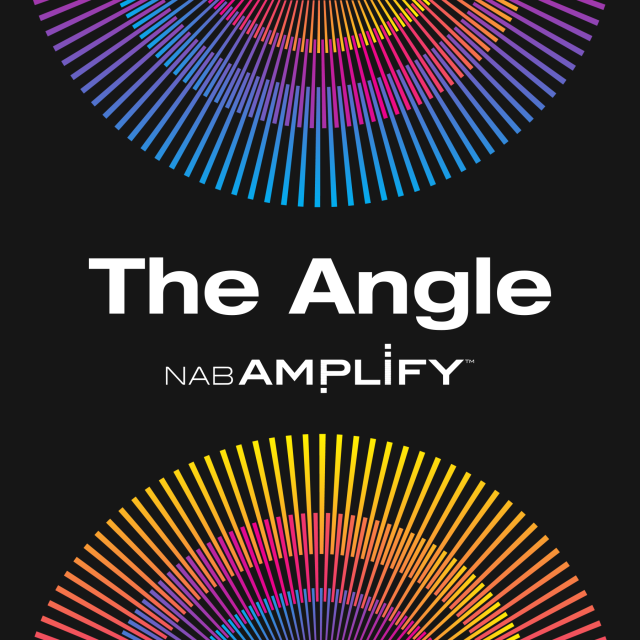
read more: How 5G will lower barriers to live broadcasting (GSMA)
This summer’s sports broadcast schedule brings with it new possibilities for 5G, a technology that is expected to revolutionize production and even broadcast infrastructure as a whole.
While tests, proofs of concept and small-scale activations (such as fan zones) still dominate, there are also some examples of 5G being used on a larger scale in broadcast production.
5G is said to also have the added benefit of improving the efficiency of live broadcasts by eliminating the need for large on-site staff and wired equipment, both at arena venues and in remote locations.
According to the GSMA, this approach could enable broadcasters to reduce production costs by up to 90%, ultimately saving the global media industry billions of dollars per year.
Currently, the most high-profile uses of 5G are the Olympic Games and the UEFA European Football Championships in Germany.
The Olympic opening ceremony along the Seine river in Paris will be covered at least in part by cameras connected to a fixed cellular link provided by telephone company Orange.
The venue will be packed and large, and details are being kept secret due to security measures, but the Olympic flame will be livestreamed across France using a combination of 5G and Elon Musk’s Starlink satellite network.
France Télévisions will produce 10 hours of live coverage per day tracking the torch’s 1,625km journey across various geographic locations with different levels of network coverage.
Frédéric Brochard, the broadcaster’s CTO, said: “This innovation will enable our editorial teams to produce more content with greater flexibility and speed, while keeping costs down and maintaining the quality standards that France Télévisions values so much.”
Read more: Paris 2024 Olympic Torch Relay Showcases Carbon Reduction with 5G (NAB Amplify)
On the ground, content will be captured and distributed using a private 5G bubble called “Dome” from French startup Obvios, whose Dome device is small enough to be carried in the trunk of a car.
read more: Olympic Torch Relay: Obvios teams up with France Télévisions to revolutionize audiovisual production (Obvios)
Amy Rajaongson, a broadcast engineer at France Television, explained that the company has created a “private 5G bubble” with latency of 50-90MB/s and a bitrate of 5,000MB/s.
She said, “In this setting; [torch relay] The runners have two antennas mounted on the roof of their vehicles, one for private 5G and one for Starlink, which ingest the camera streams into an AWS-hosted cloud.”
The system uses cellular bonding and cloud technology to combine different network connections and dynamically select the best connection in real time to ensure optimal signal quality.
“If we weren’t producing this way, we wouldn’t have been able to afford to deploy a traditional setup. This kind of setup gives us more opportunities to produce content,” said Romuald Ratto, France Télévisions’ director of innovation and AI.
read more: Innovation france.tv PARIS 2024 – a broadcasting first, 100% cloud and 5G (TVU)
At the Euros, Deutsche Telekom successfully debuted 5G coverage from fan zones. The company built a 5G campus network for RTL Deutschland, providing customized private facilities that enabled a range of live broadcasts during the opening match of the tournament. The proximity to the network allowed them to broadcast live 5G reports directly from the fan zones.
The signal was received and transmitted directly to the studio via an integrated SIM card, without the need for an additional mobile solution. The network provided the basis for multiple parallel data streams with extremely high bandwidth, the company added.
Additionally, an RTL team equipped with two mobile 5G cameras has been testing various features over 5G in Cologne, Germany: These tests (apparently successful) included ultra-low latency live video and audio intercom for direct communication between the control room, camera operators and interviewers.
Return video to show camera operators and interviewers what is being broadcast in real time was also tested, as well as remote control of the cameras from a central control room.
read more: Clear: Live images from the 2024 European Championships with 5G from Deutsche Telekom (Deutsche Telekom)
Ericsson is also using 5G in Germany to “transform the fan experience” at the Euros: Deutsche Telekom Ericsson is supporting RTL’s private 5G campus network in Cologne, which spans 35,000 square metres around RTL Germany’s production studios, from where cameras transmit interviews with fans in HD.
O2 Telefónica has partnered with Ericsson to roll out 5G coverage across all 10 host cities in Germany, ensuring fans with a 5G device and network subscription can enjoy above-average mobile connectivity.
read more: Ericsson transforms fan experience at European mega-events with cutting-edge 5G technology (Ericsson)
Around the same time, the Swedish company was engaged in a “groundbreaking” endeavor that represented “a transformative leap in the production and consumption of live sports entertainment in Denmark.”
This was a trial transmitting a live broadcast of a soccer match in Copenhagen over Telco 3’s 5G standalone network (provided by Ericsson). The proof of concept tested four 5G broadcast cameras and one drone camera, each of which requested 35Mbps and 100% uplink time from the network.
“However, the stadium will have sufficient capacity to support arena-wide television production in future, supporting many times more 5G cameras to capture the action from a variety of camera angles,” the partners said.
“Producing with 5G has many advantages: everything is done wirelessly, making photographers much more flexible and mobile,” said Morten Brandstrup, head of news technology at TV 2.
“When setting up cameras at a sports event, we can work much faster because we don’t need to lay hundreds of metres of cable. And not only can we take advantage of existing 5G networks, but the security and stability of live production is completely different.”
The trial also showcased Sony’s 5G-compatible broadcast camera technology.
Klaus Pfeiffer, head of connected content acquisition at Sony Professional Europe, said: “5G-enabled cameras are a game changer. [are] High-resolution images can now be transmitted wirelessly in real time.
“This major advancement opens up new possibilities for live broadcasting, providing audiences with even more engaging and interactive live content through 5G-enabled transmission.”
read more: Ericsson, 3 Denmark, TV 2 and Sony usher in a new era of live sports broadcasting (Ericsson)
In the US, T-Mobile continued its 5G sports activations this month, this time partnering with the PGA of America for the KPMG Women’s PGA Championship. As with the Men’s PGA Championship, T-Mobile’s 5G portable private network allowed NBC Sports to add 5G cameras to more holes and broadcast across NBC, Peacock and the GOLF Channel.
The 5G link also allows for real-time player data and tracking, more broadcast viewing, and the “PuttView” augmented reality experience for VIP guests.
“Being able to provide even more content to female golf fans, including real-time scores and shot data, is a game changer,” said Carrie Field, president, T-Mobile Business Group.
T-Mobile is using 5G to drive operational efficiencies in sports and broadcast production.
The telecommunications company said the data-intensive process of providing fans with real-time scores, shot data and other information is “typically costly and labor-intensive, but 5G is changing that.”
Ahead of the championship, the team collected 47GB of data to create a digital twin of the golf course, and 5G reduced typical data transfer times by around 75%, making it “easier than ever to deliver this unparalleled experience to our fans,” the team said.
Until now, broadcasters have struggled to bring more cameras onto the course: wired cameras required miles of cable, and wireless cameras had limited bandwidth and didn’t support 4K.
T-Mobile says its 5G private network, combined with portable data transmitters and highly efficient coding devices, will enable broadcasters such as NBC to bring more cameras onto the course and film more live content in 4K at 60 frames per second.
This is thanks to “ultrafast data speeds and an average glass-to-glass latency of less than 100 milliseconds.”
read more: T-Mobile 5G Brings Tech Innovation to Women’s Golf at KPMG Women’s PGA Championship (T-Mobile)
Meanwhile, Verizon continues to help the NHL stream league game broadcasts to the AWS Cloud for centralized remote production, a workflow it demonstrated at the NAB Show in April.
The solution runs on AWS Wavelength Zones, a mobile edge computing service that delivers ultra-low latency applications for 5G devices, reducing the speed from content capture to broadcast from seconds to milliseconds, and has been called a “game changer” for broadcast.
“Live cloud production will enable the NHL to use the optimal combination of resources to produce high-quality content from virtually anywhere, at virtually any scale,” said Julie Souza, global head of sports at AWS.
“Verizon 5G speeds will create new opportunities for the continued adoption and expansion of live cloud production not only in sports, but across all verticals.”
read more: Verizon Business, AWS and NHL to demonstrate 5G-enabled cloud broadcasting at 2024 NAB Show (Verizon)

Why should you subscribe to The Angle?
Exclusive info: Get an editorial roundup of the most important cutting-edge content.
Behind the scenes access: Go behind the scenes with in-depth Q&As with industry experts and thought leaders.
Unparalleled Access: NAB Amplify is a digital hub delivering technology, trends and insights you can’t get anywhere else.
Join a community of professionals who are as passionate as you are about the future of film, TV and digital storytelling. Subscribe to The Angle now!


